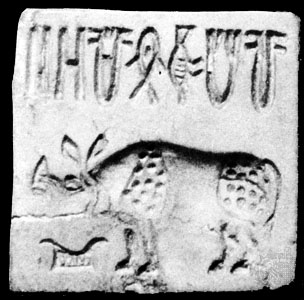Indus Valley seals may not be proof of advanced linguistic skills
 Hong Kong, April 30 : A team of scientists has refuted claims made by a research group that the puzzling symbols that were found on Indus Valley seals are proof of a written script of a language from an ancient civilization, and therefore a literate culture.
Hong Kong, April 30 : A team of scientists has refuted claims made by a research group that the puzzling symbols that were found on Indus Valley seals are proof of a written script of a language from an ancient civilization, and therefore a literate culture.
According to a report in Asia Times Online, the claims have been challenged by historian Steve Farmer and Harvard University Indologist Michael Witzel.
On April 23, the US-based Science journal published a paper by an Indian and Indian-American team of scientists and researchers that claimed patterns of symbols found on Indus objects had the definitive linguistic pattern found in written languages.
Such a pattern is different from non-linguistic signs.
The paper, titled ''Entropic Evidence for Linguistic Structure in the Indus Script’, featured the findings of Indian-born researchers at the University of Washington in Seattle and the Tata Institute of Fundamental Research in Mumbai.
It claims computer analysis revealed comparative “entropic evidence” that Indus signs have a linguistic order similar to some of the world’s oldest languages, such as Sumerian from Mesopotamia, classical Tamil and Sanskrit from the Indian sub-continent.
The researchers said they used computer analysis to compare the pattern of Indus symbols with the patterns of known spoken and mathematical languages.
This is the first time that such a process has been used to determine whether unknown symbols are the written script of a language.
“The findings provide quantitative evidence suggesting that the people of the 4,500-year-old Indus civilization may have used writing to represent linguistic content,” said project leader Rajesh Rao, a computer scientist at the University of Washington.
“If this is indeed true,” Rao told Asia Times Online, “then deciphering the script would provide us with unique insights into the lives and culture of the Indus people.”
However, in a quick response dated April 24, Farmer and Co rubbished the Washington University study.
Farmer and Co argued that Rao and Co had compared the Indus sign sets with “artificial sets of random and ordered signs”.
They said that the Rao study proved nothing that is not known - that is, “the Indus sign system has some kind of rough structure, which has been known since the 1920s”.
“Indus Valley texts are cryptic to extremes, and the script shows few signs of evolutionary change,” said Farmer and Witzel.
“Most (Indus) inscriptions are no more than four or five characters long; many contain only two or three characters. Moreover, character shapes in mature Harappa appear to be strangely ‘frozen’, unlike anything seen in ancient Egypt, Mesopotamia or China,” they added. (ANI)